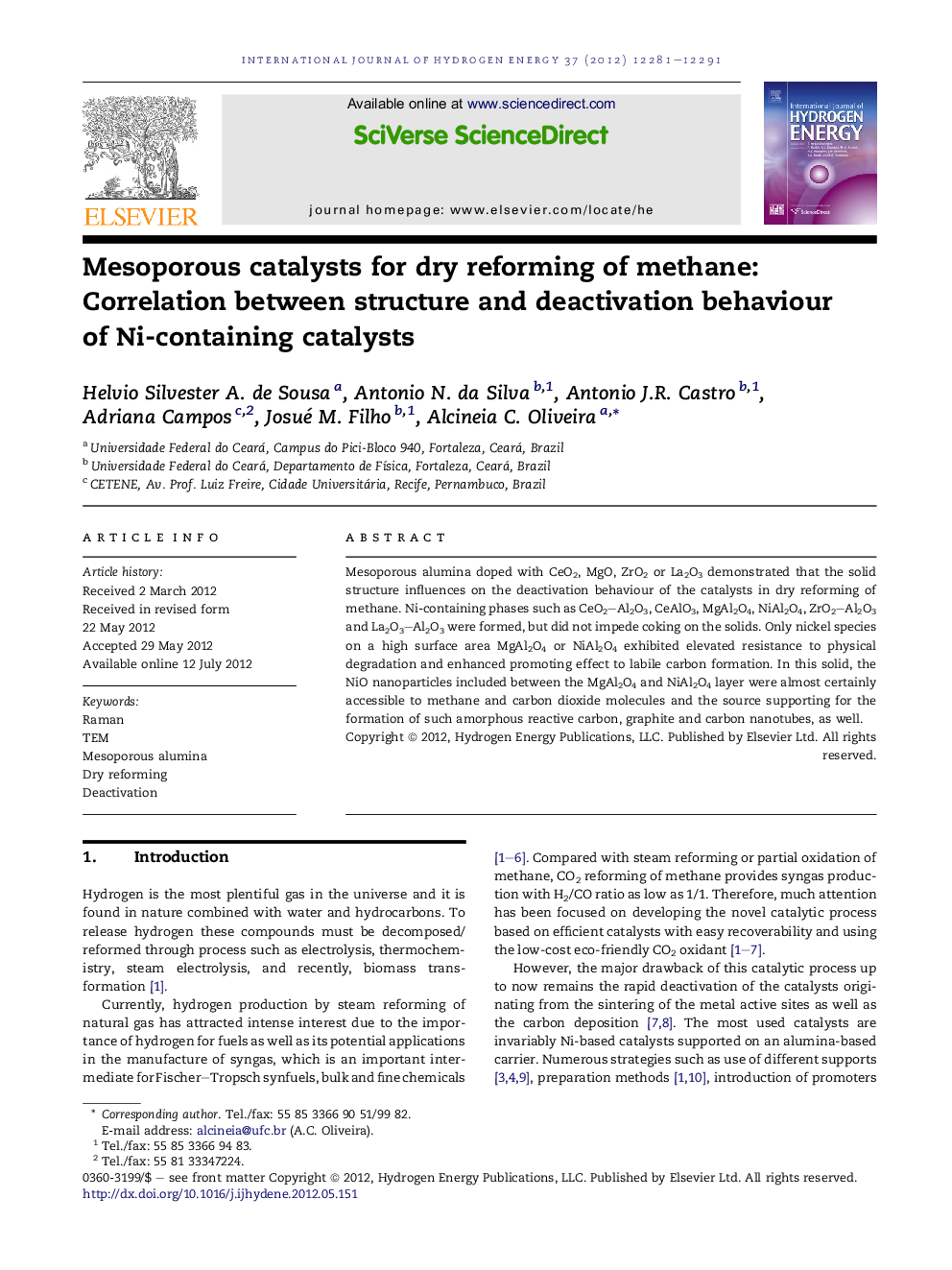| Article ID | Journal | Published Year | Pages | File Type |
|---|---|---|---|---|
| 1271063 | International Journal of Hydrogen Energy | 2012 | 11 Pages |
Mesoporous alumina doped with CeO2, MgO, ZrO2 or La2O3 demonstrated that the solid structure influences on the deactivation behaviour of the catalysts in dry reforming of methane. Ni-containing phases such as CeO2–Al2O3, CeAlO3, MgAl2O4, NiAl2O4, ZrO2–Al2O3 and La2O3–Al2O3 were formed, but did not impede coking on the solids. Only nickel species on a high surface area MgAl2O4 or NiAl2O4 exhibited elevated resistance to physical degradation and enhanced promoting effect to labile carbon formation. In this solid, the NiO nanoparticles included between the MgAl2O4 and NiAl2O4 layer were almost certainly accessible to methane and carbon dioxide molecules and the source supporting for the formation of such amorphous reactive carbon, graphite and carbon nanotubes, as well.
Graphical abstractFigure optionsDownload full-size imageDownload as PowerPoint slideHighlights► Mesoporous alumina doped with CeO2, MgO, ZrO2 or La2O3 were obtained. ► Raman, XRD, TEM and thermal analysis indicated that structure of the supports provided NiO entities were exposed to CH4 and CO2. ► Formation of amorphous reactive carbon, graphite and carbon nanotubes after the catalytic test.
